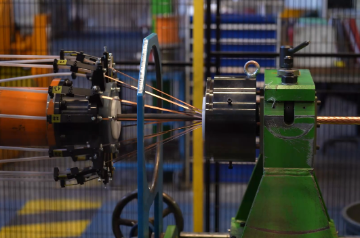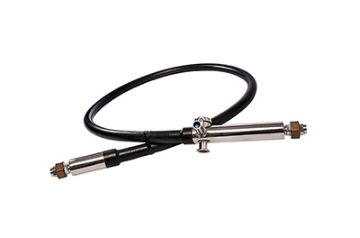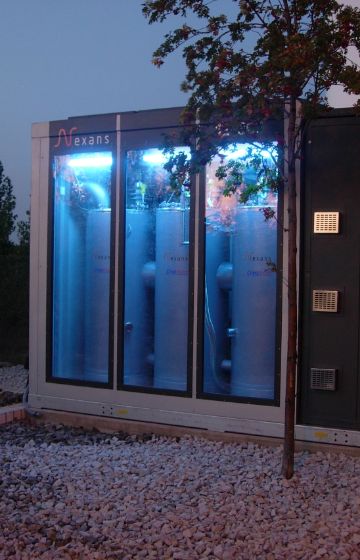- Markets
- Products
- Services
- News
- Tools & Resources
- About Nexans
- Search
- Contact us
- Compare
- Sign in
Ensuring sustainable and resilient transmission networks
The world is electrifying faster because it's the most viable path to reduce emissions, improve efficiency, increase energy security, and modernize infrastructure driven by economics, innovation, and climate imperatives. The industry is accelerating at an unprecedented pace and scale. The future of our planet relies on the transition to renewable energy sources. It is no longer a question of if, but when this transition will occur. As the security of the electric grid becomes increasingly critical, it is imperative to establish a sustainable power grid.
For over a century, grids have been the backbone of electricity systems distributing electricity to various sectors. With the rise of electric cars and heat pumps, electricity is now replacing fossil fuels in new areas, increasing grid demands. Additionally, the rapid expansion of renewable energy projects necessitates more power lines and efficient grids to ensure reliable power supply.
increase in the demand for electricity by 2030 (source: International Energy Agency)
of grids required by 2040
power capacity from wind and solar by 2045
Superconductivity to accelerate the Energy transition & Electrification
As the world moves towards an electrified future driven by renewable energy, electric vehicles (EVs), and industrial electrification, energy distribution grids encounter significant challenges. These include grid overloads, delays in connecting distributed energy resources (DERs), frequency instabilities, and inadequate infrastructure upgrades. Addressing these issues offers an opportunity to reconsider and redesign the operation of global grids.
The energy industry faces great challenges that could be overcome by extending the use of groundbreaking technologies like superconductivity, which is besides part of the IGTs (Innovative Grid Technologies – supported by CurrENT, a key industry association representing innovative grid technology companies operating in Europe).
3 key challenges lie ahead during this transition to renewable energy
#1. Modern, smart and expanded grids are essential for successful energy transitions
Challenges of power transmission networks
#1. Modern, smart and expanded grids are essential for successful energy transitions
Grids, the backbone of modern electricity systems, are becoming crucial as clean energy transitions advance, yet they often get overlooked. For over a century, grids have powered homes, businesses, and industries. Clean energy shifts are transforming our energy systems, increasing electricity's role in economies. Thus, achieving net zero emissions requires larger, stronger, and smarter grids.
Achieving national energy and climate goals requires global electricity use to grow 20% faster in the next decade than the previous one. To reach net zero emissions by 2050, limiting temperature rise to 1.5 °C, electricity demand must increase even more rapidly. Expanded grids are essential for growth as electric vehicles, heating and cooling systems, and hydrogen production scale up using electrolysis.
To meet national goals, over 80 million kilometres of grids need to be added or refurbished by 2040. Grids are crucial for decarbonising electricity and integrating renewables. If countries achieve their energy and climate targets, wind and solar PV will account for over 80% of the global power capacity increase in the next two decades, up from less than 40% previously. In the IEA's Net Zero Emissions by 2050 Scenario, wind and solar make up nearly 90% of the increase. This rapid deployment of renewable energy requires modernising distribution grids and building new transmission corridors to connect remote renewable resources with demand centres.
Modern digital grids are crucial for ensuring electricity security during clean energy transitions. As solar PV and wind power increase, systems must become more flexible to handle output changes. To meet climate goals, system flexibility needs to double by 2030. This requires new grid operations, leveraging distributed resources like rooftop solar, and deploying grid-enhancing technologies while using demand response and energy storage through digitalisation.
#2. Electric Grid Security & Infrastructure : Grids risk becoming the weak link of clean energy transitions
At least 3,000 gigawatts (GW) of renewable power projects are waiting to connect to grids, including 1,500 GW in advanced stages—five times the solar and wind capacity added in 2022. This indicates that grid connection is becoming a bottleneck for achieving net zero emissions. The number of pending projects may be even higher as current data covers only half of global wind and solar PV capacity.
The grid is expected to significantly expand by 2050 under all net-zero scenarios. Optimising power flows across the system will be important to minimise the need for extensive grid construction, thereby reducing bottlenecks in deploying clean electrification. Transitioning to a flexible power system, where demand can adjust to variable supply sources, will be essential. However, even with advanced optimisation, constructing new grids will still be necessary. Thus, maintaining focus on the challenges of grid construction remains important.
Innovative grid technologies could materially improve the efficiency of power flows on to the system: via existing networks with changes to pylons and wires: this would be, for example, by increasing the capacity for a given line, such as with advanced conductors, superconductors, voltage upgrades (with larger pylons), double circuiting (through adding another set of lines).
#3. Cost and Investment of Renewable Electric Grid Security: Action today can secure grids for the future
Regulations need updating for new grid deployment and better asset utilisation. Grid regulation should incentivise grids to keep pace with the rapid changes in electricity demand and supply. This entails addressing administrative barriers, rewarding high performance and reliability, and fostering innovation. Transmission and distribution grid planning must align with government long-term plans.
While new grid infrastructure takes 5 to 15 years to complete, new renewable projects take one to five years and EV charging infrastructure less than two years. Grid plans should integrate inputs from long-term energy transition plans across sectors, anticipate and support the growth of distributed resources, connecting resource-rich regions including offshore wind, and link with other sectors including transport, buildings, industry, and fuels such as hydrogen.
Building out grids also requires secure supply chains and a skilled workforce. Governments can support the expansion of supply chains by creating firm and transparent project pipelines and by standardising procurement and technical installations. They also need to build in future flexibility by ensuring interoperability of all the different elements of the system.
Unlocking the potential of superconducting systems
Some key IGTs (Innovative Grid Technologies) are ready, including Superconductivity.
Superconducting cable systems have a critical role to play in addressing these challenges.
As well as being highly energy efficient and reliable, superconducting systems are less disruptive to install and require much less space than conventional cables and overhead lines. Transmission system operators can benefit by integrating superconducting cable systems into their networks:
- enable the energy transition: decentralised generation increases the need for high-efficiency transmission: superconducting cable systems offer high-efficiency bulk power transmission over long distances, with none of the resistive losses encountered in conventional high-voltage lines and cables. High-voltage DC (HVDC) superconducting cable systems are particularly suited to this application. Nexans has qualified a 320 kV DC superconducting cable for currents of up to 10 kA with a 3.2 GW power transmission capability with Best Paths project meant at demonstrating how innovative transmission systems and industrial solutions could foster the integration of renewable energy into the power grid.
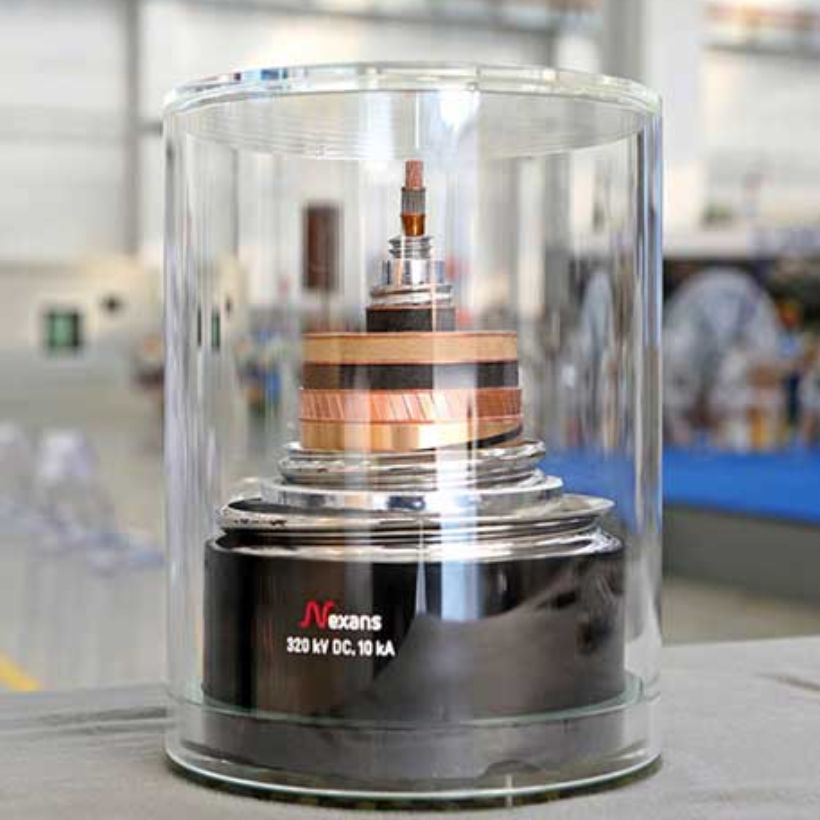
Best Paths – (acronym for “BEyond State-of-the-art Technologies for rePowering Ac corridors and multi-Terminal HVDC Systems”), the largest energy project funded under FP7 – focused on the development of high-capacity transmission networks needed to meet Europe’s long-term energy goals and incorporation of renewable energy sources. The project united expert partners around five large-scale demonstration areas focused on ensuring increased network capacity and system flexibility – incorporating innovative transmission systems and industrial solutions to link offshore wind farms and improve the interconnections of the entire power grid.
The Energy Transition relies on distributed renewable generation, new transportation paradigms, and enhanced energy efficiency. HTS technologies offer solutions to many of these challenges.
Superconducting grids can facilitate the integration of large-scale renewable energy sources, such as offshore wind farms and remote solar power plants, by enabling efficient long-distance transmission of bulk power with minimal losses. This can overcome geographical limitations and unlock the full potential of renewable energy resources.
New generation assets – particularly renewables such as wind and solar – are typically sited in remote locations, which means that extensive deployments of new grid infrastructure are required in previously pristine environments.
How can superconductors help?
- The use of HTS cable systems eliminates the need for visually-intrusive overhead line infrastructure. Furthermore, the rights of way required for new HTS cables are extremely narrow – typically, corridors are only a metre wide. Cables are direct-buried, with no need for pipes or tunnels.
- Undergrounding overhead lines holds out the prospect of releasing land for new commercial and industrial uses. As already noted, the beauty of using HTS cable systems is that the right of way required is extremely narrow – typically around one metre. By contrast, the cable swathe required with conventional copper and aluminium circuits is sometimes more than 60m wide.
HTS cables have a number of additional qualities that make them attractive for use in electricity networks.
- HTS cables are capable of carrying extraordinarily high currents – far greater than conventional copper or aluminium cables. This makes it possible to transmit and distribute electricity at much lower voltages.
- They can transmit a phenomenal amount of power relative to their size. To put this in context, a single HTS cable with a diameter of 17 cm (about 6½ inches) can transmit 3.2 GW. This is equivalent to the power of three nuclear reactors.
- Superconducting cables produce neither heat nor electromagnetic fields, so there is no interference with surrounding power, telecom and pipe networks.
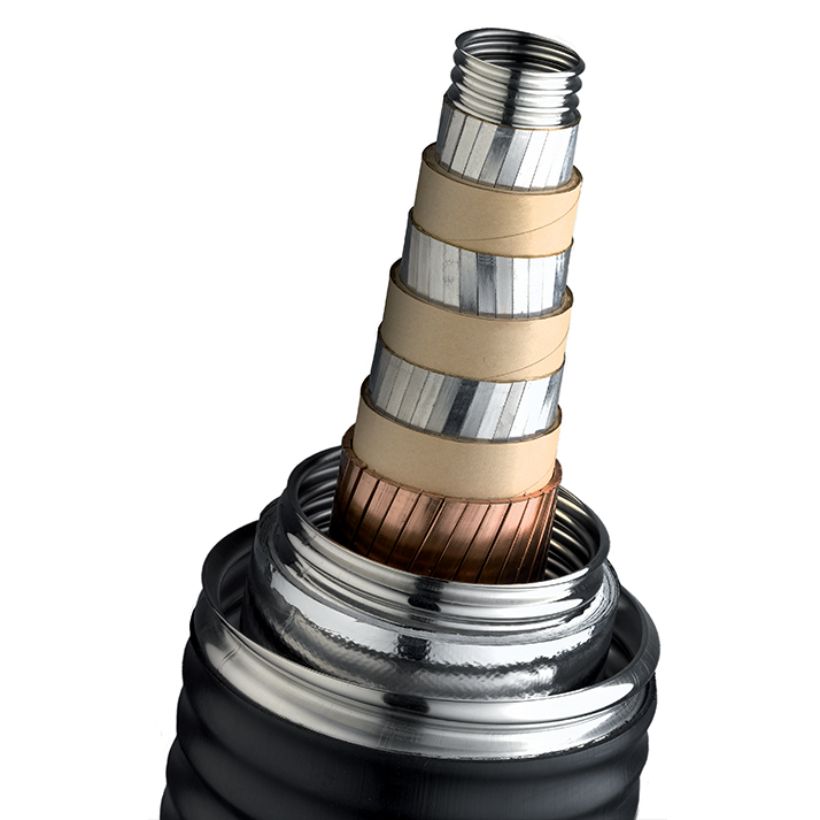
Together, these properties mean that HTS cables are uniquely suited to solving some of the major challenges now facing distribution and transmission system operators, as well as other major electricity users, including transport operators.
HTS cable systems allow for sustainability and performance : combining efficiency with environmental responsibility whilst ensuring economic sustainability and performance
Furthermore, high-temperature superconductivity offers significant cost reductions. Numerous projects have demonstrated millions of euros in savings by decreasing capital expenditures compared to conventional copper or aluminium cables. Although the savings are contingent upon project location and complexity, HTS technology helps overcome permitting right-of-way challenges, enabling efficient high-voltage transmission at medium voltage levels. As copper and aluminium become increasingly scarce and expensive, the return on investment for HTS technology will improve.

- The high current density, which can be transmitted in a comparatively small cross-section, makes it possible for the cable routes to be significantly narrower with the same capacity.
- The line width is a very important issue in the construction of power lines for several reasons. For example, it is often not possible to retrofit or upgrade conventional routes in conurbations due to space constraints, but a superconducting route can be realised due to its small space requirement. Superconductors are also justified in rural areas. The narrow line width limits the impact on the natural environment. Particularly in sensitive natural areas, superconductors offer an ecologically better alternative to the large number of conventional cable routes that are required to connect offshore wind farms. HTS technology is transforming offshore wind energy. The SupraMarine consortium (RTE, ITP, Nexans and a world leader in the Cryogencics cooling systems) is developing a 100km HVAC superconducting export cable that aims at reducing costs by approximately 1 billion euros for a 2 GW offshore wind project.
- In addition, reduced cable route widths are also advantageous in terms of right of way and public acceptance.
- By minimizing energy losses, superconducting grids contribute to a smaller carbon footprint for the energy sector. Reduced losses translate to lower fuel consumption at power plants and less greenhouse gas emissions. Furthermore, the compact nature of superconducting cables can reduce land use and visual impact compared to overhead lines.
Applications
Superconductivity is currently advancing industrial applications, offering significant potential to transform grid networks. By incorporating superconducting cables and fault current limiters, the energy sector can attain exceptional levels of efficiency, capacity, and sustainability. This progress aligns with global objectives for decarbonisation and fosters an energy transition.
Recent projects clearly highlight the potential and opportunities of superconducting systems - So far, superconducting cables have been successfully operated in the electricity grid for several years, for example:
- LIPA project: powering the US grid: Nexans developed and delivered a complete 138 kV AC superconducting cable system
- Best Paths: Boosting renewable energy integration: Nexans designed and built a 320 kV DC superconducting loop including a single 30 m cable carrying a current of 10 kA for a rated power transmission capacity of 3.2 GW.
Protection & power conditioning
Protection and Power Conditioning: enhancing resilience with superconducting fault current limiters
An important but often overlooked advantage of superconducting technology is its role in electrical protection—specifically through the use of Superconducting Fault Current Limiters (SFCLs). These devices significantly enhance power quality, system resilience and operational safety.
In the event of a short circuit or fault condition, SFCLs instantly and automatically limit excessive current without the need for mechanical intervention. Unlike conventional protection devices, which rely on opening a circuit to interrupt current flow, superconducting fault current limiters use the intrinsic properties of superconductors to transition rapidly from a superconducting (zero-resistance) state to a resistive state. This transition happens within milliseconds, allowing SFCLs to absorb and limit the fault current before it can damage downstream equipment.
This capability provides several key benefits for the energy sector
More information about superconductivity:

- Improved network reliability and safety: the self-acting SFCL limits fault currents to a level which can be pre-defined in keeping with the power rating of the grid’s technical infrastructure. The system is intrinsically fail-safe and automatically returns to its passive operating state after a fault incident.
- Optimized infrastructures : power grid equipment must be adapted to increasing fault current levels. Nexans Superconducting Fault Current Limiters (SFCL) provide a cost effective modular solution for protecting transformers, switchgear and other components against excessive overloads in case of grid failures or circuit feedbacks
- Better service: Ageing of grid equipment due to dynamic and thermal stress from fault currents is significantly reduced
SFCLs offer a smart, scalable solution that supports 24/7 reliability, self-healing electrical infrastructure and reduced maintenance requirements.
In short, integrating superconducting fault current limiters into the power networks provides a modern, automated approach to protection and conditioning—aligning with the needs of next-generation, resilient energy networks.
More information about superconductivity:
Shaping future transmission networks
Transforming energy infrastructures and improving resilience of power grids
The advantages of superconducting solutions for power transmission present compelling opportunities for the energy sector. As global energy demands rise and the imperative to address climate change becomes more pronounced, superconducting technology represents a critical component in advancing sustainable and efficient energy infrastructure. Continued progress in materials science, cryogenics, and power electronics is facilitating the broader adoption of this innovative technology.
Superconductivity, previously limited to research settings, is increasingly being applied within industrial contexts, offering significant opportunities to transform energy networks. The integration of superconducting cables and fault current limiters enables the sector to enhance efficiency, increase capacity, and support sustainability objectives, thus contributing to global decarbonisation efforts and the broader energy transition.
As global energy systems shift toward electrification and decarbonization, transmission networks operators must align with the principles of the energy transition. HTS technology directly supports this trajectory by:
- Reducing grid losses
- Enabling more efficient integration of renewable energy sources
- Supporting compact, modular, and resilient infrastructure design
All these programs and the history of Nexans position the company today as a global leader in superconducting cables for electrical grids. This makes Nexans the first European and global industrial player to possess the technology ready to meet all the needs of transmission networks operators. In other words, for HV, MV, and LV cables, Nexans is currently the only manufacturer worldwide capable of meeting all these needs, while offering solutions to meet the rise in global energy demand and increased trasmission capacities on electrical networks.
More about Nexans High Temperature Superconducting (HTS) Solutions:
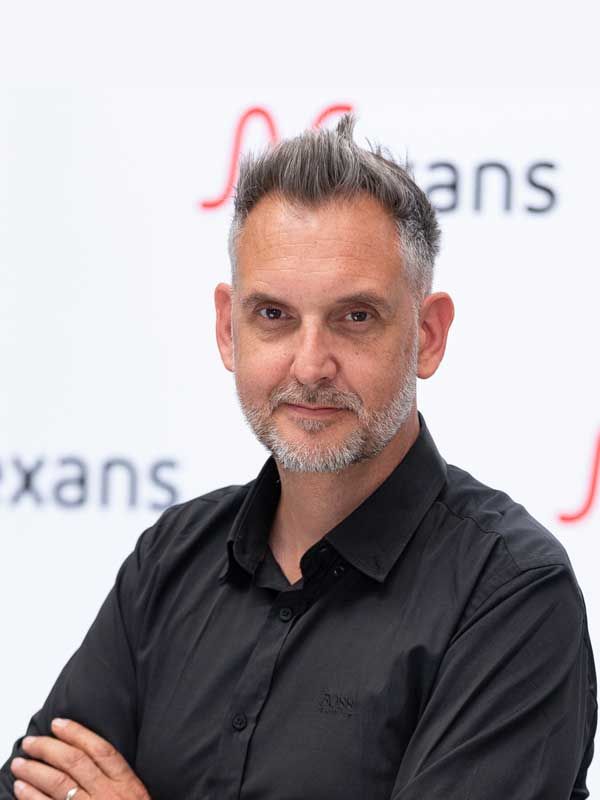
Our websites
Select your country to find our products and solutions
-
Africa
- Africa
- Ghana
- Ivory Coast
- Morocco
- North West Africa
- Americas
- Asia
- Europe
- Oceania


